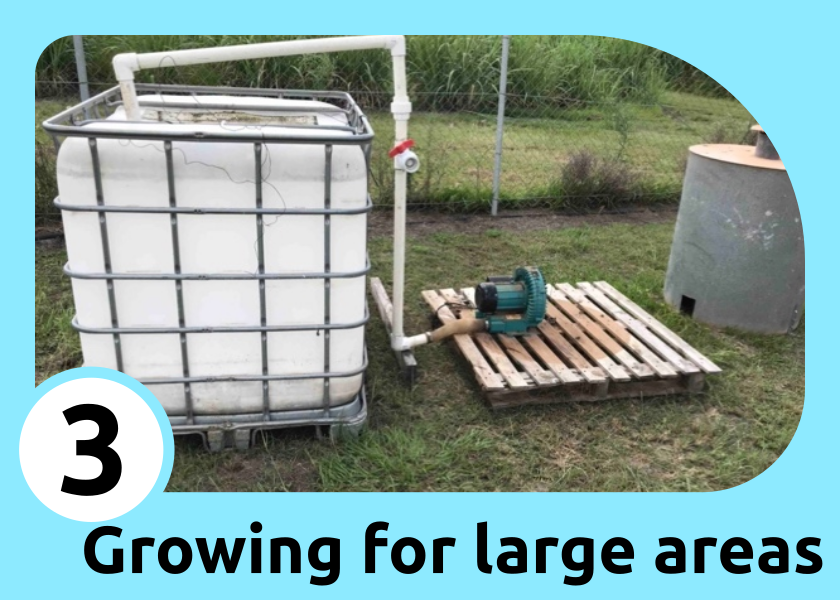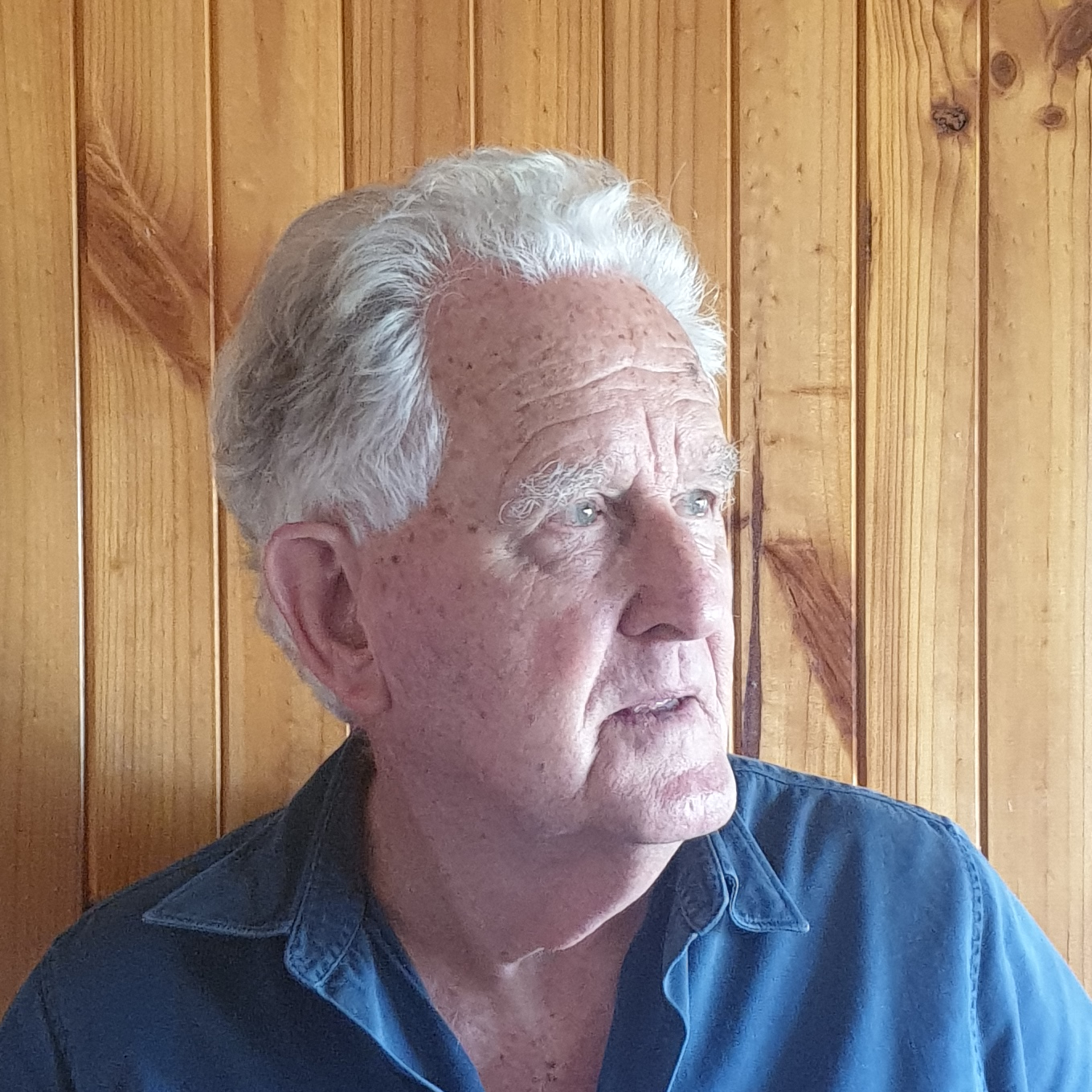
The starter is multiplied in water with nutrients and lots of air to grow the BioBooster. We used a 1,000-litre pod to grow 900 litres for our field trials, enough for 9 ha. We allow 5-10 cm for the jumpiness of the water. For smaller brews, adjust accordingly. The BioBooster is applied at 100L/ha, which is discussed in application to large areas.
Aerated Growing
Good natural soil biology needs oxygen, so aeration of the water is necessary to get the aerobic conditions for the desired biology. An aerobic BioBooster smells ‘good’, the sweet smell of good moist soil. Anaerobic biology does not need oxygen and smells foul, like rotten eggs or worse, and is often harmful. Check by smelling and confirm it by using a microscope. Dump anaerobic brews, check the conditions and try again.
We strongly suggest to first try our guide on making smaller quantities for small areas to get a feel for the process. Your garden and the veggie patch will love the resulting BioBooster.
The secret to success is maintaining a very jumpy surface at all times. Don’t overfill the pod – allow 10 cm of space at the top to account for the turbulence of the water.
Equipment
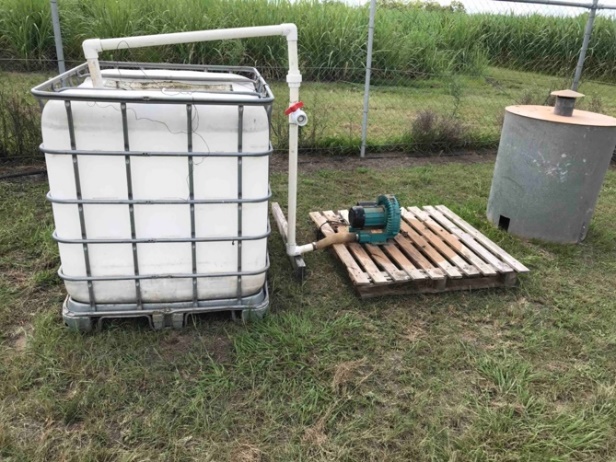

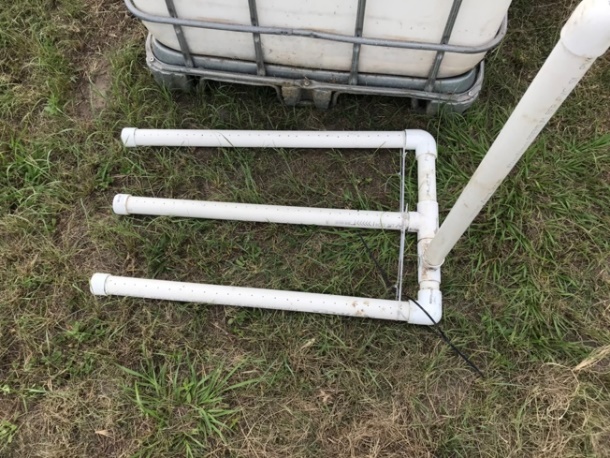
A 1,000-litre BioBooster requires:
- Tank 1,000L pod
- Pipes 40 mm PVC pipe, two lengths of 4m
- Fittings PVC 40 mm
- T pieces (2)
- 90 degree elbows (5)
- end caps (3)
- Air pump with a large enough capacity to pump at least 1L air per 1L water per minute
- Control tap 40mm PVC between pump and aerator
- A short section of 40mm clear plastic hose to connect the pump to the spreader
Put these together as shown in photos above.
Aeration
Enough air needs to be pumped to give 2 – 8 cm boil on the water surface – a very jumpy surface. The air spreader pipes need holes facing downwards and slightly sideways to give agitation across the bottom and thus minimise anaerobic dead spots.
Feeding the Biology
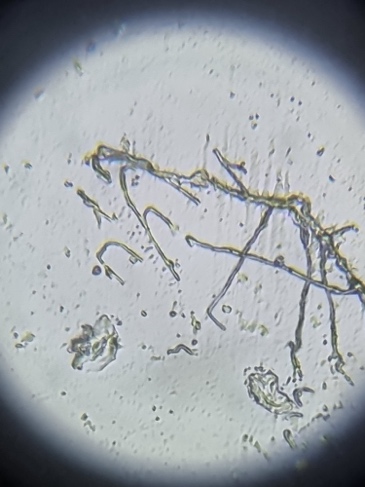
Multiplying biology requires food. The ingredients added as part of the growing phase favour fungal growth, as shown by the threads in Trevor’s photo above. Fungi are the part of the biology that builds soil structure and captures long-term carbon. It needs the other biology as food to survive and grow.
Mix into 1,000L non-chlorinated water or rain water:
- 40L starter
- 2L Fish emulsion,
- 4L Seaweed Liquid, and
- 2L Liquid Sea Minerals
- Aerate for 24–36 hours in warm to hot conditions, and 48 to 72 hours in cool conditions.
- Assess development by smell and under a microscope.
- As biology starts dying after a few hours without oxygen, keep the air going until the last 100L has been used, but no longer than 48 hours.
Tips
Clean the tank and pipes after each batch. Experience has taught that cleaning the tank and equipment while wet is easier than later, as the biology keeps working and “glues” itself to the equipment.

